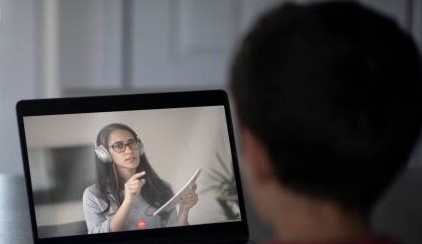This summer, students from the Communication Sciences and Disorders (CSD) Department embarked on a clinical and educational journey while providing telepractice speech and language services to clients from the Eckelmann-Taylor Speech and Hearing Clinic at Illinois State University.
Due to the coronavirus (COVID-19), the Illinois State campus held all summer courses and certain services online. This required the transition of traditional in-person clinic services into the telepractice format. The American Speech-Language Hearing Association (ASHA) defines telepractice as the “application of telecommunications technology to the delivery of speech language pathology and audiology professional services at a distance by linking clinician to client or clinician to clinician for assessment, intervention, and/or consultation.”
Graduate students in CSD applied appropriate models of technology to deliver services and gained experience in the operations of technology used in the delivery of speech/language services. In collaboration with a licensed speech-language pathologist clinical educator, students developed high-quality treatment sessions using evidence-based practice techniques to address individual client goals.
Through the delivery of telepractice services, graduate students acquired specialized knowledge and skills in selecting appropriate materials, activities, assessments, and interventions for speech-language therapy. Materials, instructional techniques, and therapy procedures were adapted and modified for various client and disorder variables as well as accommodated for lack of knee to knee contact with the client.
Students explored and gained knowledge with new multimedia techniques and resources when providing online therapy services. Resources such as Boomcards, YouTube, StorylineOnline.net, LessonPix, and Google Documents were some examples used when creating engaging and motivating therapy sessions for pediatric and adult clients. Both pediatric and adult client populations with a wide variety of individual needs were given services via telepractice. Services included accent modification, gender-affirming communication services, aphasia, language disorders, articulation disorders, phonological processing disorders, augmentative and alternative communication (AAC), and services for social language and communication disorders.
Families and caregivers attended sessions to facilitate and support the communication-based services. Communication partner training was vital to create an environment where the service provider, client, and family worked together to produce positive outcomes and generalization into real-life situations.
Telepractice is a constantly evolving process that requires students and professionals alike to maintain expertise with the ever-changing nature of technology. Understanding the potential for clinical applications and the use of web technology will allow CSD graduate students to become more experienced at engaging their clients in a virtual environment while delivering high-quality necessary services in a safe and appropriate format.

